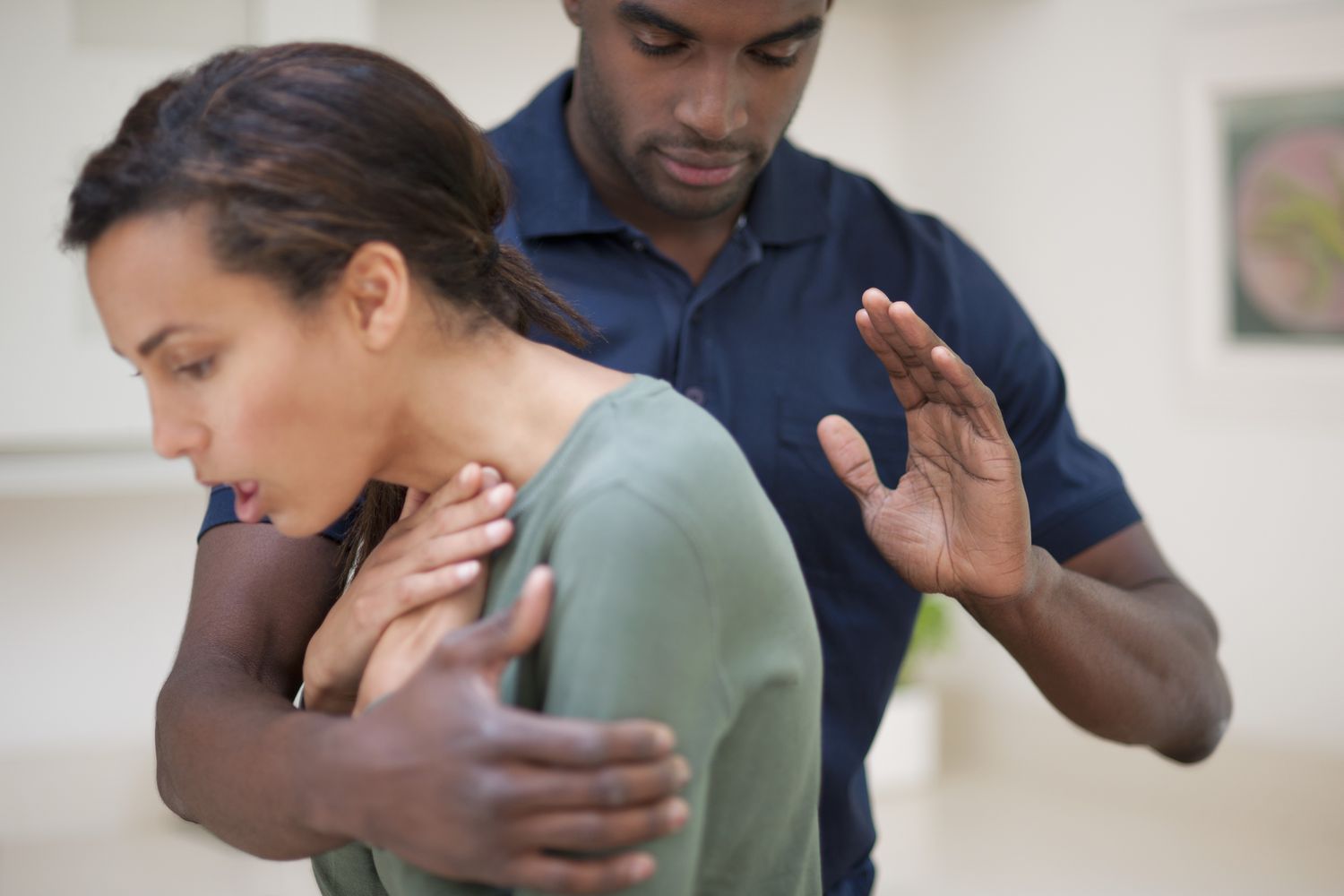Choking occurs when something blocks the airway, preventing air from reaching the lungs. This can happen when a piece of food or any other object enters the trachea (windpipe) instead of the esophagus (food pipe). In the case of a minor obstruction, coughing can help to remove the object. However, when the object completely blocks the airway, the person will be unable to breathe, talk, or cough effectively. Without intervention, choking can quickly lead to unconsciousness and suffocation.
There are a number of potential causes of choking, including eating too quickly, consuming poorly chewed food, or even swallowing objects that are not food-related. In some cases, fluids like blood or vomit can obstruct the airway, leading to choking.
Common Symptoms of Choking

Recognizing the signs of choking is essential to determining when to intervene. Here are the most common symptoms:
-
Coughing forcefully: This is the body’s natural reaction to try and clear the airway.
-
Breathing difficulties: The person may struggle to breathe or make wheezing noises.
-
Inability to speak: If the airway is blocked, the person will be unable to speak or shout.
-
Teary eyes: Choking can cause discomfort and tears as the body struggles to clear the obstruction.
-
Pale or blue skin: Lack of oxygen may cause the skin, especially around the face and lips, to turn pale or blue (cyanosis).
-
Unconsciousness: If the choking continues and the airway is completely blocked, the person may lose consciousness.
If any of these symptoms are present, it is essential to act quickly and efficiently to provide first aid.
First Aid for Choking

The first aid you provide depends on the person’s age and condition. Below are the steps for first aid based on whether the person is conscious or unconscious.
1. If the Person is Conscious: Performing the Heimlich Maneuver
The Heimlich maneuver, also known as abdominal thrusts, is a technique used to remove an object lodged in the throat. This method can be used for both adults and children, though the procedure varies depending on the age of the person.
Steps for the Heimlich Maneuver for Adults:
-
Stand behind the person: Place your arms around their waist, just above their navel.
-
Make a fist with one hand: Place the thumb side of your fist against the person’s abdomen, above the navel.
-
Grab your fist with your other hand: Press your hands into the person’s abdomen with quick, inward, and upward thrusts. The movement should be sharp and forceful to create enough pressure to expel the object.
-
Repeat if necessary: Continue performing the Heimlich maneuver until the object is expelled or the person begins to breathe normally.
Heimlich for Children:
For young children, the Heimlich maneuver is slightly different. Children under 1 year old should be given back blows and chest thrusts instead.
2. If the Person is Unconscious: CPR and Clearing the Airway

If the person loses consciousness and stops breathing, you must immediately begin CPR. Before starting CPR, check the person’s mouth and airway for any visible obstructions. If you see an object blocking the airway, attempt to remove it. Be cautious when performing this step, as forcing an object deeper into the airway can cause more harm.
Steps for CPR:
-
Lay the person on their back on a firm surface: Position the victim on their back, ensuring they are lying on a flat surface like the floor.
-
Perform chest compressions: Place one hand on the center of the chest, just below the breastbone. Place your other hand on top and interlock your fingers. Press down firmly and steadily 30 times, allowing the chest to rise between compressions.
-
Provide rescue breaths: After 30 compressions, tilt the person’s head back slightly to open the airway. Pinch their nose shut, cover their mouth with yours to form a seal, and give two rescue breaths. Ensure the chest rises with each breath.
-
Repeat CPR: Continue cycles of 30 compressions and 2 rescue breaths until the person begins to breathe normally, or emergency help arrives.
How to Prevent Choking

While choking emergencies can occur unexpectedly, there are several steps you can take to reduce the risk of choking:
-
Chew food thoroughly: Take small bites and chew your food carefully to prevent food from getting lodged in the throat.
-
Avoid distractions: When eating, try to avoid distractions like talking or laughing, which can increase the risk of choking.
-
Supervise young children: Always watch young children while they are eating, as they are more likely to choke on food.
-
Be mindful of small objects: Keep small items, such as coins or buttons, out of the reach of young children to prevent accidental swallowing or choking.
When to Seek Medical Help

Even if the choking episode seems to resolve after first aid is administered, it is still important to seek medical attention, especially if the person is still having difficulty breathing or experiencing pain in their chest or throat. In some cases, pieces of food or objects may remain lodged in the airway, even after the object is expelled. It is essential to have a medical professional evaluate the situation to ensure that the airway is completely clear.
Additionally, if the person loses consciousness or experiences other symptoms like extreme pain or trouble swallowing after the choking incident, they should be taken to the hospital immediately for further evaluation.
Conclusion: Act Fast, Save a Life
Choking is a serious medical emergency that can happen suddenly, but with quick and effective first aid, you can help save a life. Understanding the Heimlich maneuver and CPR is crucial, as these techniques can prevent further injury and restore normal breathing in someone who is choking. Whether the person is an adult or child, applying the appropriate first aid steps can make all the difference.
By staying calm, acting quickly, and knowing what to do in the event of a choking emergency, you can help prevent the situation from escalating. Remember, the faster you respond, the better the chances of saving the person’s life.



